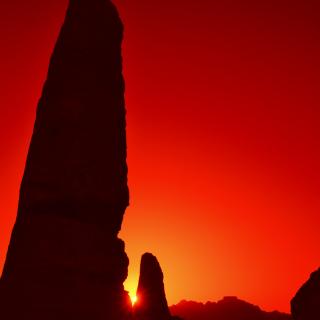Belmonte J.A.; Cuenca Sanabria, J.; Gil, J. C.(PROPAC and Cabildo de Gran Canaria, Spain; Instituto Canario de Estadística; de León, J.; Marín, C.; Ruggles, C. L.
Bibliographical reference
Mediterranean Archaeology and Archaeometry 18, 4 (2018), 377-385
Advertised on:
9
2018
Refereed citations
0
Description
The island of Gran canaria in the Canarian Archipelago is characterized by the presence of sanctuaries at the top of significant mountains and on the scarps of the huge volcanic calderas of the island (the so-called almogarenes) where particular rituals took place at precise moments of the year. In particular, the area of the Caldera de Tejeda presents a paradigmatic example of an adaptive process to a harsh but attractive environment, offering an excellent horizon, with impressive natural monuments such as the Roques Bentayga and Nublo acting as reference landmarks, where land- and skyscapes could be in close contact and permanent interaction. This chain of facts suggests it as the perfect location for a Cultural Landscape interconnected with the sky which might be defended within UNESCO and IAU Astronomy and World Heritage Initiative. The recently discovered light and shadow effects at Risco Caído are indeed a highlight within this particular context. In Gran Canaria, dedicated fieldwork strongly suggests that most of the highmountain sanctuaries could be related with solar and lunar observations and, probably, astral cults. After presenting a wider cultural context of sites arorund Spain and the world, this paper will show how Gran Canaria ought to be considered as an excellent laboratory where the close relationship between land- and skyscapes in human culture can be illustrated; and how the area selected within the island is a paradigm, within this particular framework, as a marvellous example of a Cultural Landscape worth being declared as World Heritage.
Related projects

Archaeoastronomy
The main objective of this project is to study the importance of astronomy as a fundamental part of human culture and civilization from Paleolithic to the present day. Our interest is mainly devoted to the people of the ancient Mediterranean cultures from the Atlantic to the Middle East, with a special dedication to Spain, its geographical
Juan Antonio
Belmonte Avilés